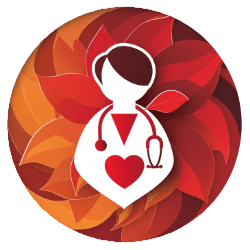As a healthcare worker, you’re often in the trenches, tirelessly battling the pressures and demands that come with the territory. It’s no secret that the stress of the job can sometimes feel like a heavyweight on your shoulders, but it’s crucial to remember that you can’t pour from an empty cup.
You’ve likely heard about the importance of self-care, seeking support, and stress management techniques, but how do you integrate these into your already packed schedule? From honing in on sleep hygiene and finding solace in mindfulness and meditation, to reaping the benefits of physical activity, there are tangible strategies that can help you find the rest and relaxation you so desperately need.
Let’s explore how you can start implementing these practices into your daily routine, ensuring you’re not only taking care of others but also prioritizing yourself. Stick around to uncover practical tips and insights that could make a world of difference in your personal and professional life.
Key Takeaways
- Establishing a consistent sleep schedule and creating a relaxing bedtime routine can improve sleep quality for healthcare workers.
- Practicing mindfulness and meditation can help alleviate stress, enhance empathy, and cultivate mental clarity.
- Regular physical activity can effectively manage stress, improve mental focus, and enhance sleep quality.
- Prioritizing self-care, setting boundaries, and practicing stress management techniques are crucial for healthcare workers to avoid burnout and maintain work-life balance.
Embracing Sleep Hygiene
As a healthcare worker, establishing a solid sleep hygiene routine can significantly reduce your stress and improve your overall well-being. You’re always there for others, but it’s crucial you’re also there for yourself, starting with your sleep. By setting a consistent sleep schedule, you’re helping regulate your body’s internal clock. This consistency is key, not just for your body, but for your peace of mind.
Creating a relaxing bedtime routine is like signaling your body that it’s time to wind down. This could be anything from reading a book to meditating. It’s about finding what soothes you. Designing a comfortable sleep environment plays a crucial role as well. Controlling light, noise, and temperature in your bedroom can transform it into a sanctuary for rest.
It’s also important to limit screen time before bed. The blue light from screens can disrupt your sleep cycle, making it harder to fall asleep. And, while it might be tempting to reach for caffeine or alcohol to unwind, avoiding these stimulants close to bedtime will promote better quality sleep.
Mindfulness and Meditation
In the midst of hectic schedules and demanding shifts, embracing mindfulness and meditation can be your sanctuary, offering a powerful way to center yourself and reduce stress. These practices are not just exercises; they’re lifelines that anchor you in the present, allowing you to navigate your demanding role with grace and resilience. You’re on the front lines, giving your all to care for others. It’s time to give back to yourself by cultivating a space of calm and clarity.
Mindfulness and meditation invite you to be fully present, to witness your thoughts and feelings without judgment. This isn’t about escaping your reality but engaging with it more deeply, with kindness and acceptance. These practices have been shown to not only alleviate stress but also enhance your capacity for empathy and compassion—qualities at the heart of your profession.
| Benefit | Method | Impact on You |
|---|---|---|
| Stress Reduction | Focused Breathing | Lowers anxiety, enhances calm |
| Emotional Balance | Loving-kindness | Fosters compassion, reduces burnout |
| Mental Clarity | Mindful Movement | Improves attention, clears mind |
| Resilience | Body Scan | Enhances well-being, promotes relaxation |
| Long-term Wellness | Regular Practice | Sustains mental health, improves mood |
Incorporating mindfulness and meditation into your routine isn’t just beneficial; it’s essential. It’s how you’ll continue to serve others while honoring yourself.
Physical Activity Benefits
Embracing regular physical activity is a crucial step in managing your stress and enhancing your overall well-being as a healthcare worker. The benefits of physical activity extend far beyond just physical health. It’s about fortifying your heart, muscles, and bones, sure, but it’s also about uplifting your spirit and clearing your mind.
When you engage in physical activity, your body releases endorphins, those natural mood lifters that combat stress, anxiety, and depression. It’s like receiving a dose of happiness and calmness, making you more resilient in the face of the demands of your profession. Moreover, physical activity sharpens your mental clarity and focus, directly impacting your productivity and the quality of care you provide.
Incorporating physical activity into your daily routine can also improve your sleep quality, allowing for deeper relaxation and recovery after long shifts. This isn’t just about avoiding chronic diseases like obesity, diabetes, and hypertension – though it certainly helps with that too. It’s about creating a sustainable lifestyle that supports your capacity to care for others by first taking care of yourself.
Frequently Asked Questions
What Is the Meaning of Rest?
Rest means taking a break to rejuvenate your body and mind. It’s about getting enough sleep, enjoying leisure activities, and giving your mind a break. It’s crucial for your health and emotional balance.
What Is the Synonyms of Rest?
You’re asking about synonyms for rest, right? They’re words like relaxation, repose, ease, tranquility, cessation, break, respite, relief, calm, serenity, stillness, comfort, peace, restoration, downtime, leisure, and unwinding. These capture the essence of rest beautifully.
What Is REST Used For?
You’re curious about REST? It’s a design approach for networked applications, letting them communicate over the web with familiar HTTP methods. It’s all about making systems talk efficiently, ensuring your tech solutions are seamless and scalable.
What Is the Acronym Rest?
Imagine REST as the backbone of the internet’s vast library. It stands for Representational State Transfer, guiding the flow of information like a librarian. You’re using it to seamlessly access and share data online.





